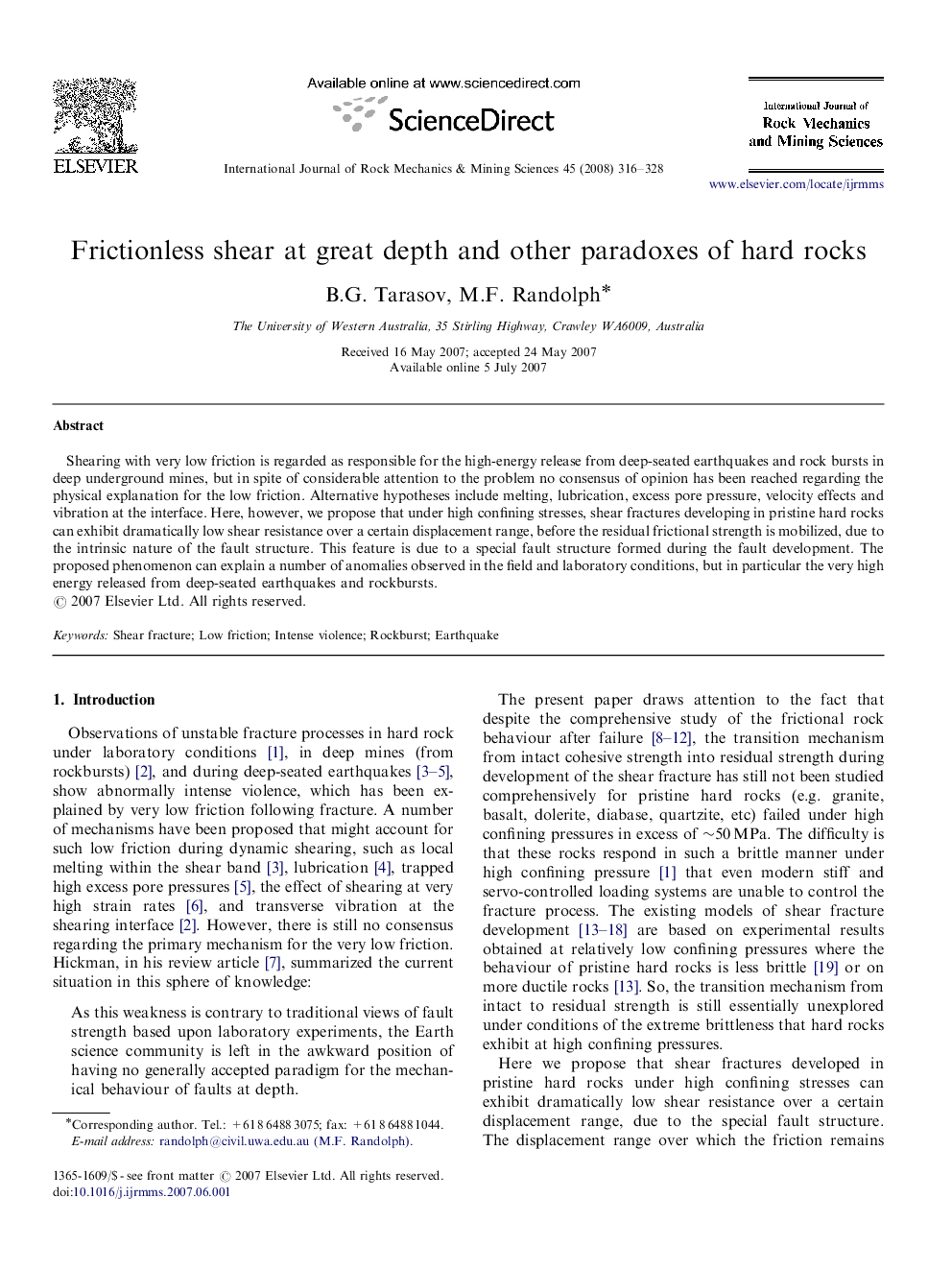| Article ID | Journal | Published Year | Pages | File Type |
|---|---|---|---|---|
| 810169 | International Journal of Rock Mechanics and Mining Sciences | 2008 | 13 Pages |
Shearing with very low friction is regarded as responsible for the high-energy release from deep-seated earthquakes and rock bursts in deep underground mines, but in spite of considerable attention to the problem no consensus of opinion has been reached regarding the physical explanation for the low friction. Alternative hypotheses include melting, lubrication, excess pore pressure, velocity effects and vibration at the interface. Here, however, we propose that under high confining stresses, shear fractures developing in pristine hard rocks can exhibit dramatically low shear resistance over a certain displacement range, before the residual frictional strength is mobilized, due to the intrinsic nature of the fault structure. This feature is due to a special fault structure formed during the fault development. The proposed phenomenon can explain a number of anomalies observed in the field and laboratory conditions, but in particular the very high energy released from deep-seated earthquakes and rockbursts.
